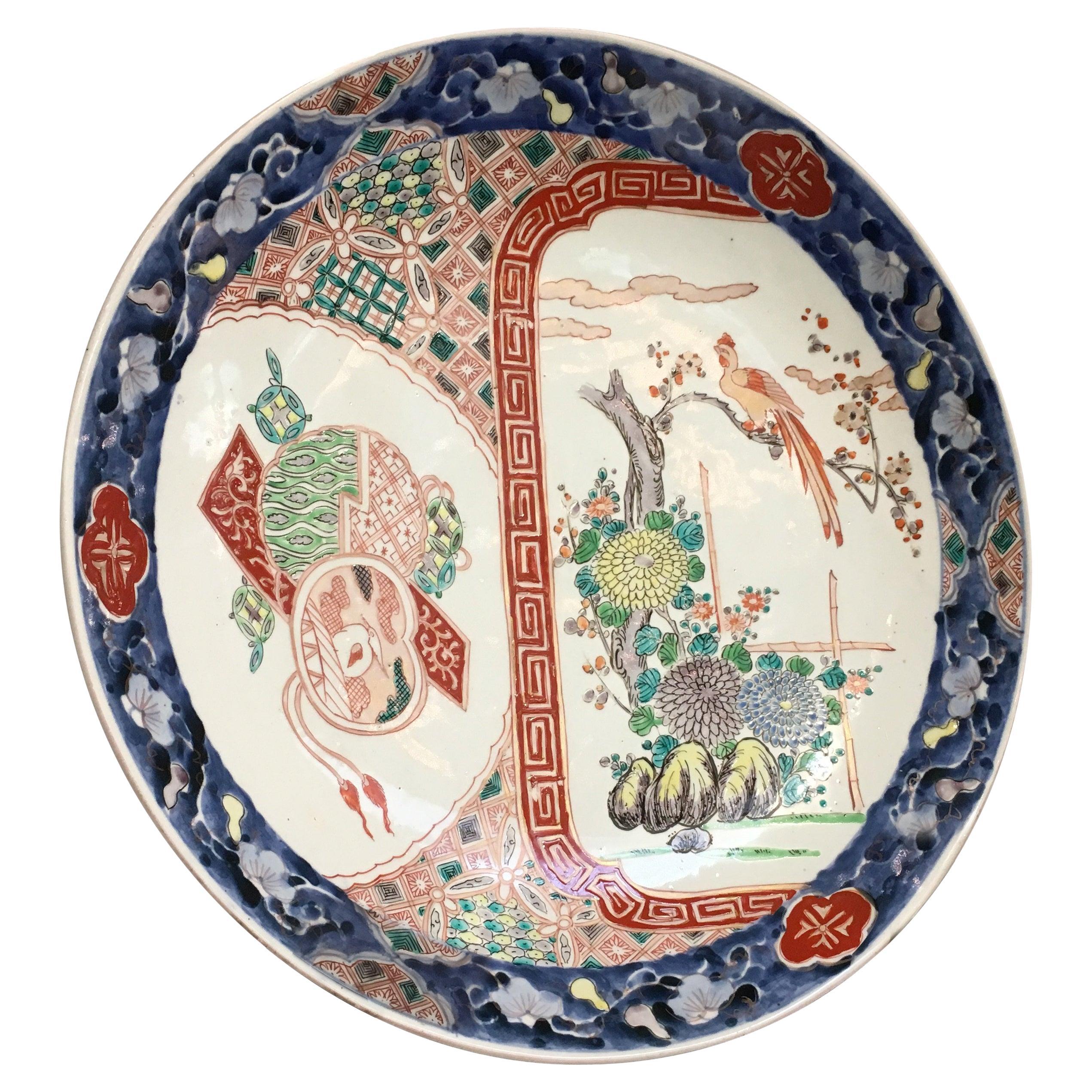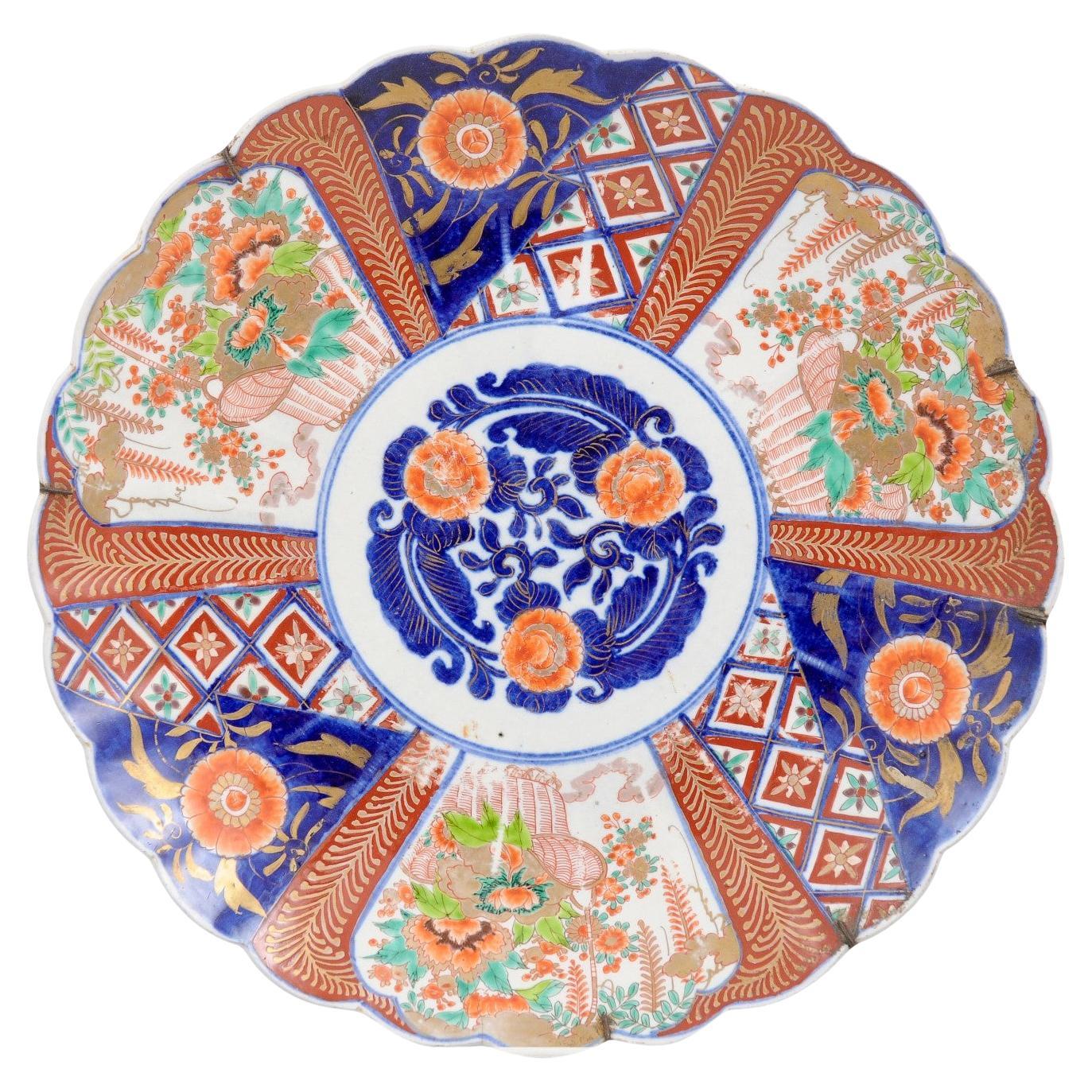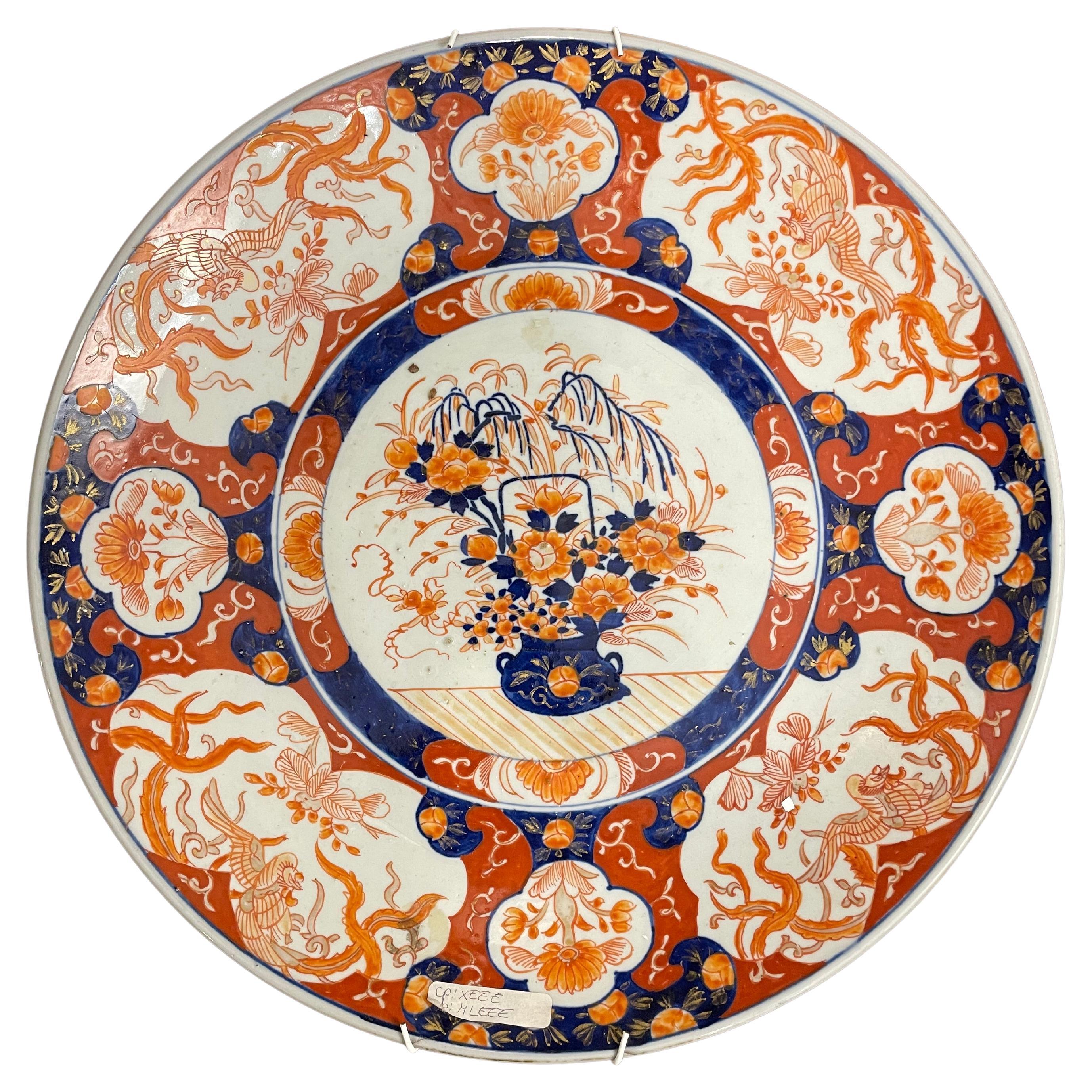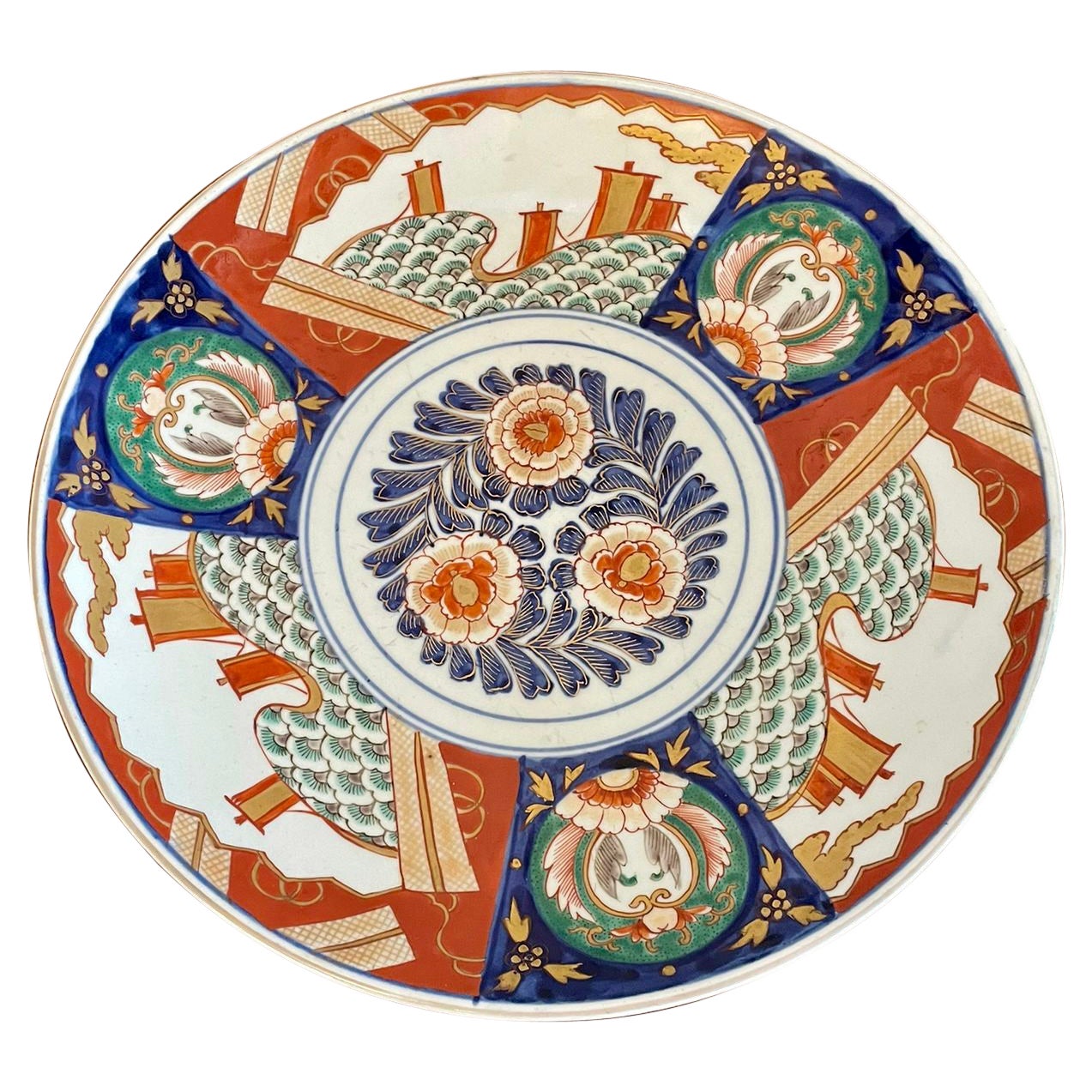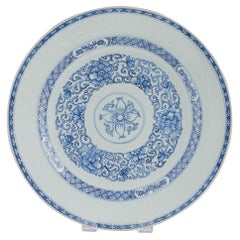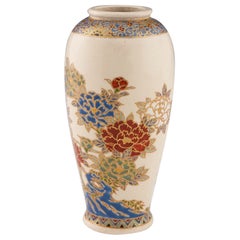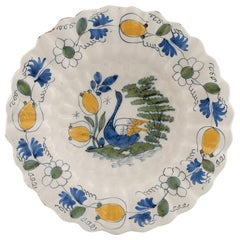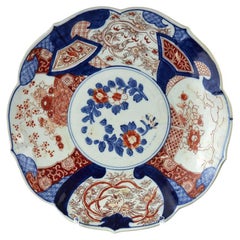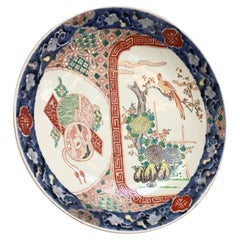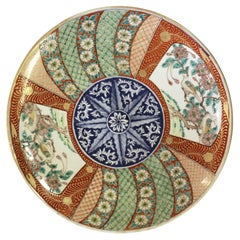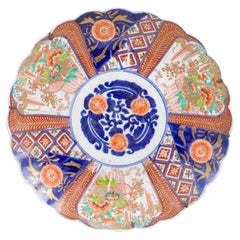Want more images or videos?
Request additional images or videos from the seller
1 of 7
Meji Period Imari Charger c1880
$516.68
£375
€440.99
CA$714.96
A$788.10
CHF 412.37
MX$9,669.79
NOK 5,190.97
SEK 4,854.37
DKK 3,291.83
About the Item
Heading : Meji period imari charger
Date : c1880
Period : Meji
Origin : Japan
Colour : Imari palette
Pattern : Blue and white underglaze border with overglaze imari flowering peonies. Central roundel of leaves and dense scroll work. Gilt detailing. The underside with four flower heads divided by s scrolls
Condition : Excellent, no chips or cracks - there are a number of pieces of clinker and a piece of kiln spit. A stripe shaped area on underside has been missed when glazed
Restoration : None
Dimensions : 36.2cm diameter, 4.4cm height
Weight : 1430 grams
About the Seller
5.0
Vetted Professional Seller
Every seller passes strict standards for authenticity and reliability
Established in 2014
1stDibs seller since 2023
86 sales on 1stDibs
Typical response time: 23 hours
- ShippingRetrieving quote...Shipping from: Tunbridge Wells, United Kingdom
- Return Policy
Authenticity Guarantee
In the unlikely event there’s an issue with an item’s authenticity, contact us within 1 year for a full refund. DetailsMoney-Back Guarantee
If your item is not as described, is damaged in transit, or does not arrive, contact us within 7 days for a full refund. Details24-Hour Cancellation
You have a 24-hour grace period in which to reconsider your purchase, with no questions asked.Vetted Professional Sellers
Our world-class sellers must adhere to strict standards for service and quality, maintaining the integrity of our listings.Price-Match Guarantee
If you find that a seller listed the same item for a lower price elsewhere, we’ll match it.Trusted Global Delivery
Our best-in-class carrier network provides specialized shipping options worldwide, including custom delivery.More From This Seller
View AllQianlong Period Blue and White Charger 1736-1795
Located in Tunbridge Wells, GB
Heading : Qianlong period blue and white charger
Date : 1735-1795
Period : Qianlong
Origin : China
Colour : Blue and white
Pattern : Painted with concentric narrow and broad bands o...
Category
Antique 1750s Chinese Qing Porcelain
Materials
Porcelain
Japanese Meji Period Satsuma Vase c1885
Located in Tunbridge Wells, GB
Heading : Japanese Meji period satsuma vase
Date : c1885
Origin : Japan - possibly Satsuma province although most likely decorated in Kobe or Yokohama.
Bowl Features : Imari palette ...
Category
Antique 1880s Japanese Porcelain
Materials
Porcelain
Nantgarw Porcelain Plate with Moulded Rim, 1813-1822
By Nantgarw China Works
Located in Tunbridge Wells, GB
A Nantgarw Porcelain Plate with Moulded Rim, 1813-1822
Additional Information:
Date: 1813-1822
Period: Regency period
Marks: Impressed Nantgarw CW mark
Origin: Nantgarw, Rhond...
Category
Antique 19th Century Welsh Regency Porcelain
Materials
Porcelain
A Dutch Delft Lobed Dish, Late 17th Century
Located in Tunbridge Wells, GB
A Dutch Delft Lobed Dish, Late 17th Century
Eric Knowles Comments. Despite the flake chip this dish is a remarkable survivor, they are almost invaria...
Category
Antique Late 17th Century Dutch Decorative Dishes and Vide-Poche
Materials
Delft
Nantgarw Porcelain Dinner Plate, c1820
By Nantgarw China Works
Located in Tunbridge Wells, GB
Nantgarw Porcelain Dinner Plate, c1820
Additional information:
Date : c1820
Period : George III/George IV
Marks : Impressed NANT-GARW C.W.
Origin : Nantgarw, South Wales
Colour : o...
Category
Antique 19th Century English George III Porcelain
Materials
Porcelain
Worcester Porcelain Blue Scale Junket Dish, c1770
By 1st Period Worcester Dr. Wall
Located in Tunbridge Wells, GB
Worcester Porcelain Blue Scale Junket Dish, c1770
Additional information:
Date : c1770
Period : George III
Marks :Square seal mark
Origin : W...
Category
Antique 18th Century English George III Porcelain
Materials
Porcelain
You May Also Like
Beautiful 19th Century Imari Charger
Located in Ipswich, GB
Beautiful 19th Century Imari Charger, beautifully decorated with central floral design continuing on to the underside. Lovely colours and c...
Category
Antique Early 19th Century Japanese Ceramics
Materials
Ceramic
Japanese Imari Charger, Meiji Period, Late 19th Century
Located in Austin, TX
A nicely decorated Japanese Meiji Period Imari charger, late 19th century, Japan.
The porcelain charger featuring a design of a hoho bird, or phoenix, per...
Category
Antique Late 19th Century Japanese Meiji Platters and Serveware
Materials
Enamel
Circa 1870 Japanese Imari Charger
Located in Chapel Hill, NC
An Imari charger, 17 1/2" dia. Wonderful movement in the decoration from the swirling panels to the doves in the blossoming branches of a tree; centered by a leaf star with rosette c...
Category
Antique 1870s Japanese Ceramics
Materials
Ceramic
$950 Sale Price
20% Off
19th Century Japanese Imari Charger
Located in Atlanta, GA
19th Century Japanese Imari Charger
Category
Antique 19th Century Japanese Tableware
Materials
Porcelain
A Japanese Imari Charger, 19th Century
Located in ARMADALE, VIC
A Japanese Imari Charger, 19th Century
Provenance: Private Australian Collection.
Description:
The central floral basket motif within a border of hou-ou bird cartouches to a cobalt...
Category
Antique 19th Century Japanese Ceramics
Materials
Porcelain
Large Antique Japanese Quality Imari Charger
Located in Suffolk, GB
Large antique Japanese quality Imari charger having quality hand painted panels with flowers, leaves, trees, birds and ships in wonderful green, blue, red, white and gold colours
...
Category
Antique Early 1900s Japanese Porcelain
Materials
Porcelain
More Ways To Browse
Japanese Meji
Cobalt Cup
Cupid Meissen
German Porcelain Tray
Green China Set
Haviland Limoges Plates
Herend Queen
Meissen Coffee Pot
Meissen Flute
Meissen Mirror
Meissen Porcelain Mirror
Porcelain Dolphins
Royal Copenhagen Vase Art Nouveau
Royal Lily
Silver Pattern Rose
Vintage Crown Royal Glasses
1 Gold And Blue Coffee Cup Saucer
18th Century Swan

